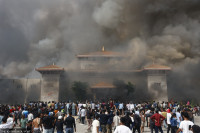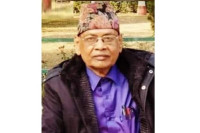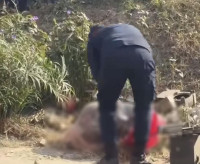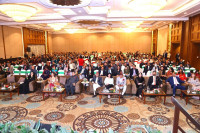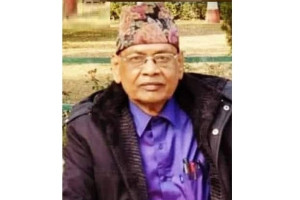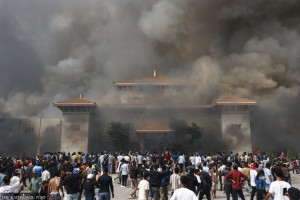Kathmandu
Queer community takes out Pride march on Gaijatra
Activists say time has come for them to be strongly united in the face of global uncertainty over LGBTQIA+ movement.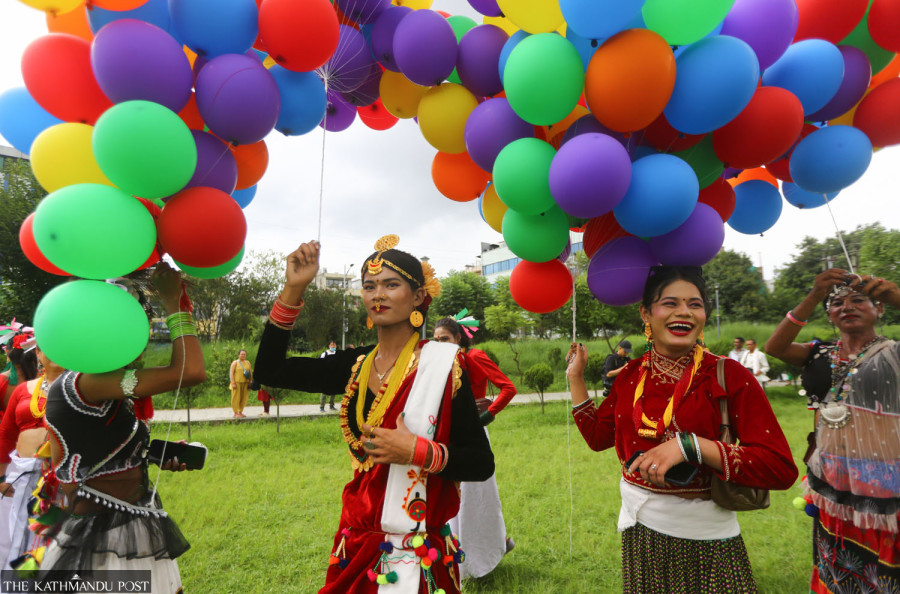
Post Report
On Sunday, as Kathmandu was abuzz with Newari Gaijatra festivities, queer advocacy and rights-based organisations brought their colour to the streets, hosting a pride parade rooted in the festival’s ethnic traditions.
In Nepal, pride parades aren’t just a June affair. It’s celebrated twice, once in the summer month, aligning with the global Pride month, and again in August during Gaijatra.
As in previous years, Blue Diamond Society hosted the 22nd ‘Nepal Pride Parade and Gaijatra Celebration,’ supported by organisations including Right Here, Right Now, Save the Children, National Indigenous Women’s Federation, Recovering Nepal, Outright International, Women Act, Amplify Change, and others.
Nearly 1,200 people joined, according to organisers, with 500 travelling from outside the Kathmandu valley from the six other provinces, most of them queer. The rest came from the Capital.
The parade under the theme, ‘Respect the spectrum, embrace the whole, that’s how we heal, that’s how we grow!’ began with a gathering at Narayan Chaur, Naxal, and wound its way through the city to Basantapur Durbar Square. The parade ended with a candlelight ceremony to honour LGBTQIA+ members who died in the past year.
Speaking at the event’s opening, Minister for Women, Children, and Senior Citizens Nawal Kishor Sah Sudi expressed solidarity. “The ministry is dedicated to the rights of the LGBTQIA+ community,” he said.
The event also saw the participation of actor Nazir Hussain, lead of the upcoming transgender coming-of-age film Gunyo Cholo, who attended with his team.
International solidarity was visible, too. Representatives came from the Asia Pacific Transgender Network (Thailand), APCOM—Asia Pacific Coalition on Men’s Sexual Health (Thailand), the Global Fund (Switzerland), Vanesa Transgender Network (Sri Lanka), and India.
The origins of this Gaijatra Pride lie in loss. Since its establishment in 2001, numerous members have died from a range of causes such as health complications, grief, family abandonment, and suicide. Many of them were rejected even after death, as their families refused to carry out the customary funeral rites.
Therefore, the organisation, in 2003 embraced the Newari tradition of Gaijatra, a festival where families commemorate their deceased members.
Over the years, the march has grown into a hybrid of memorial and pride parade, rooted in Nepal’s own culture.
This year, the parade commemorated 12 members of the LGBTQIA+ community who died last year.
For some, the day’s message went beyond remembrance.
Sonika Chhetri, a 24-year-old queer woman from Dhulikhel, said the theme hit close to home.
According to Chhetri, currently, because of anti-trans and anti-gender legislation in Western countries, even in Nepal, divisions have been growing within the queer community too, on how and what one should identify as.
“Some say trans people should not identify as trans man or woman and should identify as other or third gender,” said Chhetri. “There’s so much conflict going on, and I see that many of us have grown to only consider our way of identity or label as the correct way and disregard others.”
She stressed that the theme of “respect the spectrum” is important, adding, “Only when we respect and embrace the diversity within the whole spectrum of the queer community can we move forward.”
Another queer organisation, Mayako Pahichan Nepal, also led the Gaijatra parade under the slogan ‘Political Inclusion is Our Right’. Their procession began in front of the Karmachari Sanchaya Kosh Building in Thamel and ended at Basantapur Durbar Square, honouring late right activists Manoranjan Kumar Vaidya and Anik Rana.
“This Gaijatra parade, rooted in our culture, pays tribute to the resilience of the deceased community members,” added Anjal Shrestha, a trans man from Jhapa. “And reminds us to carry that strength forward in our own lives, especially amid the difficult global political climate facing the queer community.”




 16.12°C Kathmandu
16.12°C Kathmandu